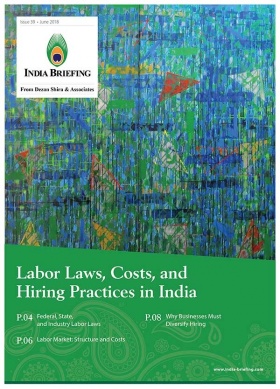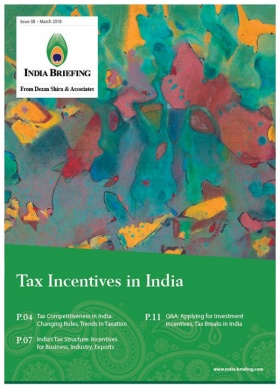RCEP Negotiations and India’s Position on the Asia-Pacific Trade Pact
India has agreed to attend trade talks under the Regional Comprehensive Economic Partnership (RCEP) after giving the previous round a miss.
The decision to go ahead by Prime Minister Narendra Modi’s office (PMO) will see a small delegation led by Minister of Commerce and Industry Suresh Prabhu head to the Singapore Ministerial meeting on August 30-31.
It is expected that India will refuse to offer tariff liberalization ‘above 86 percent of traded goods’ to non-FTA partners. RCEP members want India to increase tariff relaxations on 92 percent of traded goods.
There is growing opposition within the government and among local industries who fear opening India’s market to greater external competition, particularly from China.
What is the RCEP and why does it matter?
The 16-member grouping is a proposed trade pact between the 10 ASEAN member countries and Australia, New Zealand, Japan, South Korea, China, and India.
Together, the countries account for 25 to 30 percent of the world’s GDP, 30 percent of global trade, 26 percent of foreign direct investment (FDI) flows, and 45 percent of the world’s population.
As the dispute between the US and its major trading partners – China, EU, Canada, Japan, among others – continues to escalate, the RCEP could serve as a significant boost to international trade.
Moreover, US President Trump’s early decision to get out of the Trans-Pacific Partnership (TPP) killed that deal in 2017 – creating new space for RCEP negotiations.
The now defunct TPP was a proposed trade agreement between Australia, Brunei, Canada, Chile, Japan, Malaysia, Mexico, New Zealand, Peru, Singapore, Vietnam, and the US.
Its scope included the lowering of non-tariff and tariff barriers to trade among member countries and setting up an investor-state dispute settlement mechanism.
Since the US withdrawal, the TPP has been revived as the Comprehensive and Progressive Agreement for Trans-Pacific Partnership (CPTPP or TPP11). It will come into effect 60 days after being ratified by 50 percent of the participating states; only Mexico, Japan, and Singapore have signed on to it as of August 2018.
Meanwhile, talks to formalize the RCEP began in November 2012 as a proposed free trade agreement between the 10 ASEAN countries and the six Asia-Pacific states with which ASEAN has existing FTAs.
The RCEP aims to establish an integrated market among its member countries, and has a wide-ranging scope covering trade in goods and services, competition policy and investment, economic and technical cooperation, intellectual property (IP), and dispute settlement.
Inevitably, several sticking points have emerged on many of these issues; critics point to weak IP safeguards and the pricing of India’s cheap generic drugs, among other concerns.
India’s bottom line on RCEP
As it stands, India is ready to offer tariff liberalization on 74 percent of goods to China, Australia, and New Zealand – countries with whom India has not signed a bilateral free trade agreement.
India will offer tariff relaxation on up to 86 percent of traded goods to ASEAN, Japan, and South Korea as these are countries with whom it has already signed free trade pacts.
While RCEP countries want greater market access in India, the latter wants concessions on the movement of skilled professionals and workers.
Here, India has referred to the ASEAN-Australia-New Zealand FTA, which at least facilitates easier and transparent procedures for the temporary entry of natural persons engaged in the conduct of trade and investment.
Service exports are important to India as its domestic manufacturing sector comprises a much smaller component of the economy.
Employment visa curbs and other restrictions in several key markets, including the US, UK, and Australia mean that India will not give up its demand for greater market access for its professionals.
Yet, most RCEP countries remain non-committal in this area.
Negotiations towards finalizing the RCEP treaty were scheduled for the end of 2018 – this may likely be extended to 2019.
Managing local industry concerns, trade liberalization
While India is gradually opening up its market through a combination of bilateral and multilateral FTAs and easing its FDI rules – it has not been returned the favor, especially in the case of China.
As the US, China trade war deepens, India is competing for better market access.
China’s trade surplus with India increased from US$36 billion in 2013-14 to US$63 billion in 2017-18, pushing India’s trade deficit to unsustainable levels.
China’s exports to India are almost six times that of India’s, with stiff tariff and non-tariff barriers blocking Indian imports and investment – be it pharmaceuticals, agro-based exports, or IT.
Further, China has excess capacity in its manufacturing sector financed by state-owned enterprises while India recently launched its ‘Make in India’ program to increase its private sector manufacturing footprint.
Local producers fear that any further market opening – especially to China – will handicap India’s industrial growth.
Given this scenario – Indian industry and government officials are reluctant to be more flexible in their dealings with RCEP countries, despite the prospect of integrating its economy with established global supply chains.
The federal government has now set up an informal group of ministers (GoM) to lead India’s strategy for RCEP. It includes trade minister Suresh Prabhu, power minister Piyush Goyal, defense minister Nirmala Sitharaman, and housing and urban affairs minister Hardeep Puri.
(On November 4, 2019, India announced it was opting out of the RCEP. Read our latest report here.)
About Us
India Briefing is produced by Dezan Shira & Associates. The firm assists foreign investors throughout Asia and maintains offices in China, Hong Kong, Indonesia, Singapore, Vietnam, and Russia.
Please contact india@dezshira.com or visit our website at www.dezshira.com.
- Previous Article New LLP Rules in India: Applying for a DPIN
- Next Article Delhi, Tamil Nadu, Haryana Top Investment Destinations in India: NCAER Report 2018












